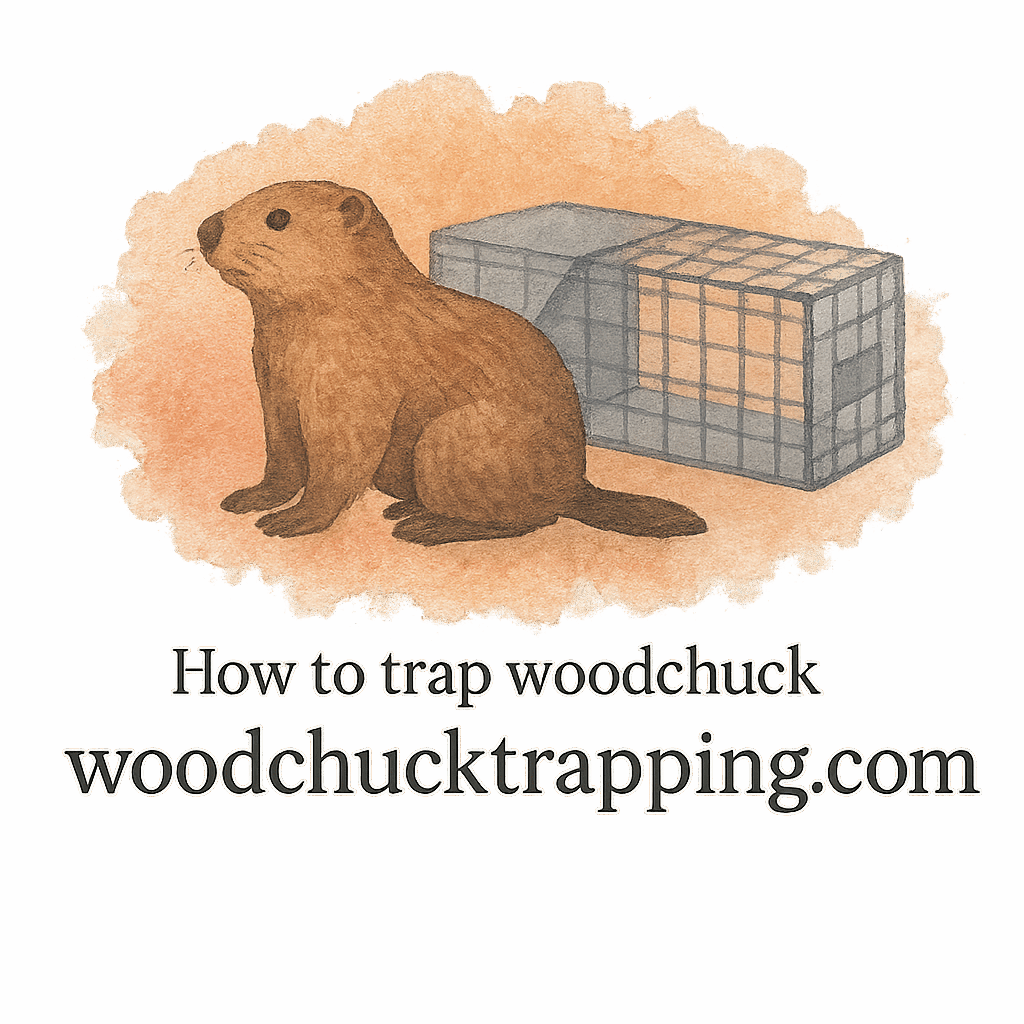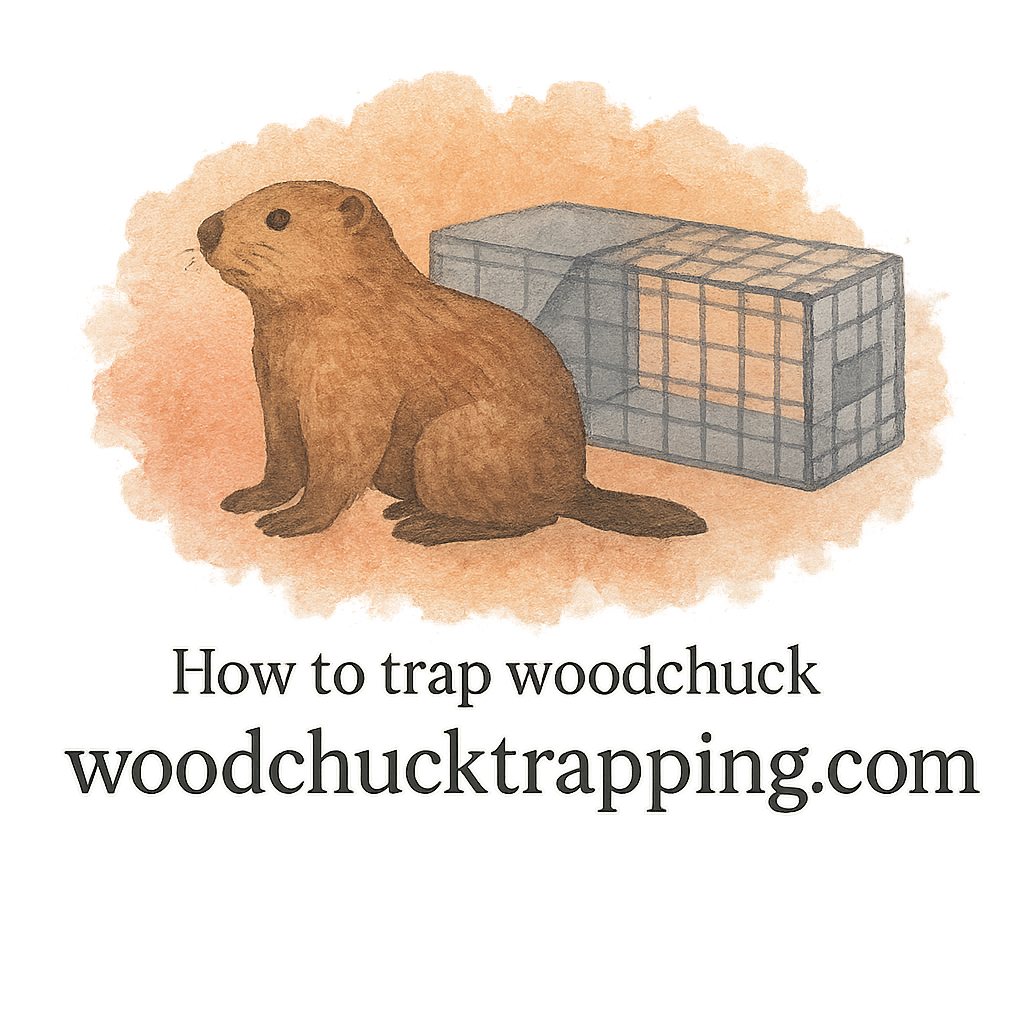Introduction
Woodchucks, also known as groundhogs, might look cute, but when they start burrowing under your shed or snacking on your garden veggies, the charm wears off fast. But here’s the thing: you don’t need to go full-on “critter commando” to deal with them. Instead, we’re talking ethical ways to trap and relocate woodchucks—methods that are effective, humane, and legal.
In this guide, we’ll explore not just how to trap woodchucks, but how to do it right—without causing harm or breaking any laws. Whether you’re dealing with one curious critter or a full-blown infestation, you’ll find practical, responsible solutions here.
Why Ethical Trapping Matters
The Impact of Inhumane Methods
It’s tempting to take the quickest route when a woodchuck tunnels under your deck. But harsh methods like poisoning or drowning aren’t just cruel—they’re often illegal and dangerous for pets, children, and non-target wildlife.
Benefits of Ethical Relocation
By choosing ethical methods, you’re protecting ecosystems, avoiding fines, and doing the right thing for animals. Plus, humane approaches tend to be more targeted and effective over time.
Explore more on laws and safety before setting a trap.
Know Your Opponent: Understanding Woodchucks
Woodchuck Behavior and Habitat
These guys are burrowers by nature. They dig complex tunnel systems and usually emerge early morning or late afternoon. Knowing when and where they roam is step one to trapping success.
Signs of a Woodchuck Infestation
You’ll spot chewed plants, large dirt mounds, and entry holes around your property. Look out for these common signs to confirm their presence.
Legal Considerations Before You Trap
State Laws and Safety Guidelines
Trapping laws vary by state. Some require permits, others mandate relocation rules. Before taking action, read up on trapping techniques and your local regulations.
Licensing and Permissions
You might need to contact your wildlife agency for legal clearance. This ensures you’re compliant and avoids unnecessary headaches later.
6 Ethical Ways to Trap and Relocate Woodchucks
1. Use Humane Live Traps
Live traps are the gold standard for ethical trapping. Choose a size that comfortably fits an adult woodchuck—about 32–42 inches long.
Choosing the Right Equipment
Look for compact traps with sensitive triggers and smooth interiors. Avoid traps with sharp edges or tight spaces. Don’t forget a sturdy pair of gloves to avoid leaving your scent behind.
Explore our top picks at equipment reviews.
2. Bait with Care and Precision
Forget peanut butter—woodchucks love fresh produce like cantaloupe, apples, and carrots.
Natural and Effective Lures
Use scent bait that mimics their natural food sources. Place the bait behind the trigger plate so they step fully inside before triggering the trap.
Discover more at baiting-luring.
3. Strategic Trap Placement
Where you place your trap matters just as much as what’s inside it.
Reading Signs and Burrows
Set traps near active burrows or along frequently used paths. Camouflage with grass or leaves to blend in naturally.

4. Monitor Traps Regularly
Check traps at least every few hours. Leaving an animal in a trap too long is both inhumane and illegal in many areas.
Humane Timing and Handling
Approach calmly, use thick gloves, and cover the trap with a towel to reduce stress on the trapped animal.
5. Relocate Responsibly
Don’t just drive them to the nearest field and hope for the best.
Safe Release Zones and Distance
Relocate at least 5–10 miles away in a wooded area with water access. Ensure it’s not private property or protected land.
6. Prevent Return Visits
Once you’ve cleared your yard, make sure they don’t come back.
Long-Term Prevention Strategies
Install fencing, remove food sources, and block access to sheds and decks. Visit our full guide on prevention-damage for more.
Equipment Reviews and Recommendations
Need help choosing the right gear? Visit our trap gear and equipment sections for tested and reviewed products.
Common Mistakes to Avoid
- Using inappropriate bait
- Setting traps in inactive areas
- Not checking traps often enough
- Relocating too close to home
Avoiding these missteps will make your trapping more effective—and humane.
Conclusion
Dealing with woodchucks doesn’t have to mean waging war. With a little patience, the right tools, and a strong sense of ethics, you can humanely trap and relocate these animals while keeping your yard safe.
By sticking to ethical practices and educating yourself, you’re not only solving your problem—you’re helping wildlife too.
For even more insights, visit our full resource site: WoodchuckTrapping.com.
FAQs
1. Can I trap a woodchuck without a permit? That depends on your state laws. Always check laws-safety first.
2. What’s the best bait for woodchucks? Cantaloupe and apples are top picks. Find more on baiting-luring.
3. Is it safe to handle a trapped woodchuck? Only with thick gloves and proper gear. Stay calm and avoid direct contact.
4. Where should I release a woodchuck? At least 5–10 miles away in an area with natural food and cover. Avoid private or protected land.
5. How can I keep woodchucks from coming back? Use fencing, remove attractants, and read more on prevention-damage.
6. What if I accidentally trap another animal? Release it carefully and reset your trap with more specific bait.
7. Can I trap woodchucks in a small yard? Yes! Learn how at minimal-space and small-yard.


